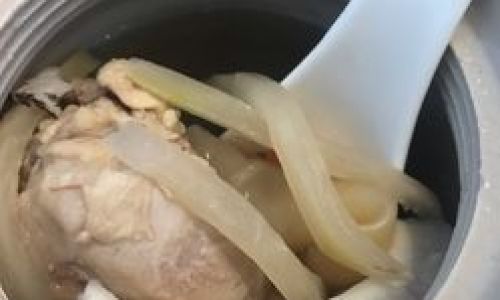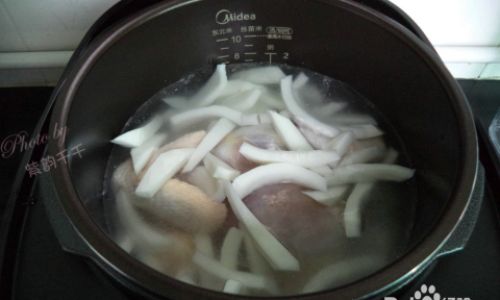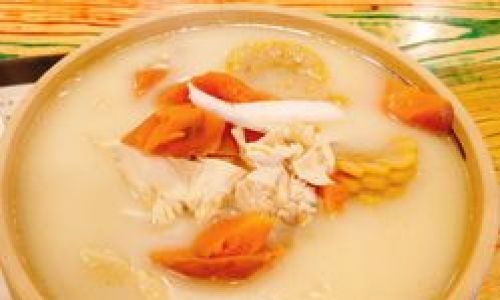Introduction
Coconut chicken stew, a dish that hails from the tropical regions of Southeast Asia, is a delightful amalgamation of flavors that tantalize the taste buds. The creamy richness of coconut milk, combined with the tender, succulent texture of chicken, creates a base that is both comforting and exhilarating. However, the true magic of this dish lies in the myriad of additional ingredients that can be incorporated to elevate its taste profile, texture, and nutritional value. This article embarks on a culinary journey, exploring the various foods that can be added to coconut chicken stew, each contributing its unique essence to create a symphony of flavors.
The Basics: Coconut Chicken Stew
Before diving into the myriad of enhancements, it’s crucial to understand the foundational elements of coconut chicken stew. Typically, the stew begins with a base of coconut milk, which provides the creamy, rich backbone. Chicken pieces, often thighs or breasts, are added for their tender texture and flavor. Aromatics such as garlic, ginger, and onions are sautéed to release their fragrant oils, creating a flavorful foundation. Spices like curry powder, turmeric, and coriander are then introduced to infuse the dish with depth and complexity.
The cooking process involves simmering the ingredients slowly, allowing the flavors to meld and develop. The result is a stew that is creamy, fragrant, and bursting with tropical flavors. However, this is just the beginning. The true versatility of coconut chicken stew lies in its ability to accommodate a wide range of additional ingredients, each adding a new layer of taste and texture.

Vegetables: The Natural Complements
Vegetables are a natural choice for enhancing coconut chicken stew. They not only add color, texture, and nutrition but also contribute fresh, vibrant flavors that complement the creamy base.
Potatoes
Potatoes are a staple in many stews, and they are no exception in coconut chicken stew. Their starchy texture helps to thicken the broth slightly, while their mild flavor absorbs the aromatic spices, making them a delightful addition.
Carrots
Carrots add a sweet, earthy flavor to the stew. Their vibrant orange hue also provides a visual contrast, making the dish more appealing. When cooked, carrots soften and release their natural sweetness, enhancing the overall taste.
Peas
Green peas add a refreshing burst of color and flavor. Their sweetness and slight crunch provide a delightful contrast to the creamy stew, making each bite more enjoyable.
Bell Peppers
Bell peppers, especially the red and yellow varieties, add a sweet, slightly tangy flavor and a beautiful pop of color. Their crisp texture also provides a nice contrast to the tender chicken and soft vegetables.
Spinach or Kale
Leafy greens like spinach or kale add a nutritious boost to the stew. They are packed with vitamins and minerals and wilt down to create a silky, green texture that complements the creamy coconut base.
Sweet Potatoes
Sweet potatoes add a natural sweetness and a rich, earthy flavor to the stew. Their orange flesh becomes tender and creamy when cooked, blending seamlessly with the coconut milk.
Fruits: A Sweet Surprise
Fruits might seem like an unconventional addition to a savory stew, but they can add a delightful sweetness and complexity of flavor.
Pineapple
Pineapple chunks add a tropical sweetness and a hint of acidity that balances the rich, creamy flavors of the stew. Their juicy texture also makes each bite more refreshing.
Mango

Mangoes can be added either fresh or dried. Their sweet, tangy flavor adds a unique dimension to the stew, making it more interesting and memorable.
Coconut Flakes
Adding a handful of toasted coconut flakes at the end of cooking adds a crunchy texture and an extra layer of coconut flavor. They also provide a nice visual contrast.
Herbs and Spices: Deepening the Flavor Profile
Herbs and spices are essential for adding depth and complexity to coconut chicken stew. They can transform a simple dish into a culinary masterpiece.
Fresh Cilantro
Cilantro is a staple in Southeast Asian cuisine. Its fresh, slightly tangy flavor and aromatic scent enhance the stew’s tropical profile. Chopped cilantro can be added at the end of cooking for a burst of fresh flavor.
Lime Leaves
Kaffir lime leaves add a unique, floral aroma and a subtle tanginess to the stew. They are often used in Thai and Laotian cuisine and can be found fresh or dried.
Lemongrass
Lemongrass stalks provide a refreshing, citrusy flavor that balances the richness of the coconut milk. They can be bruised and added whole to the stew, or their juice can be extracted and used.
Galangal
Galangal, a root similar to ginger, has a unique, floral aroma and flavor. It adds depth and complexity to the stew, making it more intriguing.
Makrut Lime Peel
The zest of makrut limes adds a zesty, aromatic flavor to the stew. It can be used in place of or in addition to kaffir lime leaves for a more intense citrus flavor.
Proteins and Seafood: Expanding the Dish’s Horizons
While chicken is the traditional protein in coconut chicken stew, other meats and seafood can be added to create new and exciting variations.
Shrimp
Shrimp add a delicate, sweet flavor and a tender texture to the stew. They cook quickly, so they should be added towards the end of the cooking process.

Mussels or Clams
Mussels or clams can be added to the stew for their briny, savory flavor and tender texture. They release their juices as they cook, enriching the broth.
Tofu or Tempeh
For a vegetarian or vegan version, tofu or tempeh can be added. They absorb the flavors of the stew and provide a satisfying, protein-rich element.
Pork or Beef
Adding pork or beef cubes can create a heartier, more robust stew. These meats add their own unique flavors and textures, making each bite more interesting.
Grains and Noodles: Creating a Complete Meal
Adding grains or noodles to coconut chicken stew can transform it into a more filling, satisfying meal.
Jasmine Rice or Coconut Rice
Serving the stew over jasmine rice or coconut rice adds a starchy, slightly sweet element that complements the flavors of the stew.
Rice Noodles
Rice noodles can be added to the stew towards the end of cooking, absorbing the flavors of the broth and creating a hearty, satisfying dish.
Quinoa
For a nutritious twist, quinoa can be cooked separately and added to the stew. Its nutty flavor and high protein content make it a great addition.
Conclusion
Coconut chicken stew is a versatile, flavorful dish that can be enhanced with a wide range of ingredients. From vegetables and fruits to herbs, spices, proteins, and grains, each addition brings its unique flavor and texture to the table. Whether you’re looking to create a hearty, satisfying meal or a light, refreshing dish, coconut chicken stew offers endless possibilities. Experiment with different ingredients, and let your taste buds guide you on a culinary adventure through the tropical flavors of Southeast Asia.
As you embark on this culinary journey, remember that the beauty of cooking lies in its creativity and adaptability. Feel free to mix and match ingredients based on your preferences, dietary restrictions, or what’s available in your local market. The key is to balance the flavors, textures, and colors to create a dish that is both visually appealing and delicious.
In the end, coconut chicken stew is not just a dish; it’s a celebration of flavors, textures, and cultures. It’s a reminder of the world’s diversity and the joy that can be found in sharing a meal with loved ones. So, gather your ingredients, fire up the stove, and let the magic of coconut chicken stew begin.






0 comments